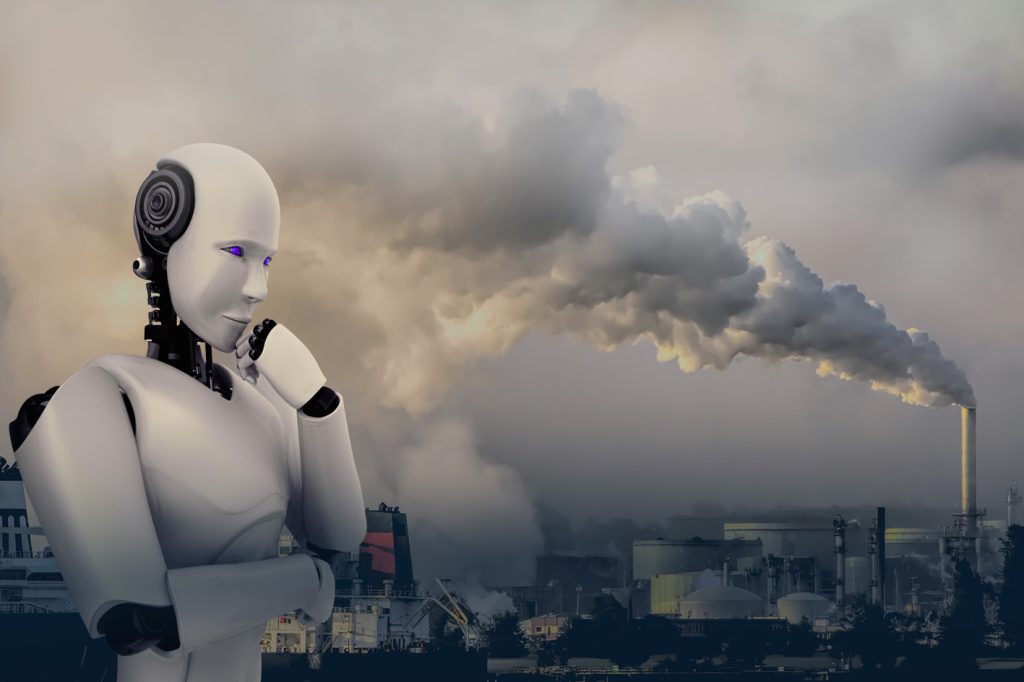
Our breathing air is becoming increasingly polluted, and yes, air pollution is considered the biggest threat to global environmental health.
Have you ever experienced the effects of air pollution?
Do you know,
What causes air pollution?
Effects of pollution and the solutions!
Today, nine out of ten people breathe polluted air, resulting in severe health issues. That means air pollution poses a serious threat to public health. AI technologies are creating many solutions to air pollution. It can help with improved measurement, source identification, forecasting, prediction, and applying logic to problem-solving. Take a simple look at how AI helps resolve air pollution!
Air Pollution: Look at 2023
Let’s discuss some examples of air pollution crises the world faced in 2023.
In Bangkok, As of the beginning of 2023, 1.3 million people had reported ailments associated with air pollution. Children and pregnant women are urged to stay inside and wear N-95 masks.
In March 2023, Kochi will be marked as the most polluted city in Kerala. Following a fire at a solid waste treatment plant, its clean air has experienced a thick haze for the past six days. Sulfur dioxide and nitrogen dioxide levels in the atmosphere were raised. Toxins like dioxin are also present in high concentrations in the air. Many have experienced serious health problems as a result of the Brahmapuram plant’s toxic air emissions. However, before the fire, on February 22, PM 10 and PM 2.5 concentrations were 72 ppm and 53 ppm, respectively. These numbers then quickly jumped to 192 ppm and 119 ppm, respectively.
Anyway, the investigation by the air quality tracker found that, among the other six cities, the city had the largest increase in winter pollution from October 18, 2021, to February 28, 2022. The concentration of hazardous PM2.5 particulate matter was 2.7 times higher than the WHO’s recommended limit in Kochi, according to the air quality index dashboard.
Yes, the population of the world continues to be exposed to levels of air pollution that are well beyond the WHO Air Quality Guidelines. Artificial intelligence aids in the fight against air pollution and the monitoring of environmental health.
Technological AI Solutions
Air pollution sources may be promptly and precisely found using AI technology. AI can discover the sources of air pollution quickly. To boost the accuracy of predictions, scientists are using machine learning and cognitive abilities. Anyway, the advanced technologies of AI can be used to limit the hazardous emissions that are emitted into the environment. Finding the cause of pollution is made easier by AI technology. By reducing the effects of climate change, artificial intelligence may be exploited to its best ability to save our world.
Smart Sensors
The automation of numerous validation, data gathering, and processing procedures is now possible, a big thanks to artificial intelligence systems. Because of these developments, sensors and similar devices may be quickly installed all around a city to sample the air quality very immediately. The abilities of artificial intelligence to enhance data collection and qualitative measurement. In order to improve analysis, AI can precisely identify patterns in data sets. These datasets are prepared by expert data labelers through perfect data labeling.
AI can gather data from sensors and satellites and assist scientists in blending climate models. These AI-based sensors detect the levels of pollutants in the air, such as particulate matter, volatile organic compounds (VOCs), and gases.
- AI models can be trained to predict air quality in real-time using data from sensors that monitor various pollutants. This information is used to alert citizens about potential health problems and take preventive measures.
For example, using smart sensors, AI can identify the source of gas leakage and the time of convenience.
Similarly, AI-powered drones can monitor pollution levels in real-time, enabling authorities to detect and respond to incidents quickly. This helps prevent large-scale environmental disasters.
Air Monitoring and Management
The main step in air pollution prevention is cleaning the air. AI technology helps purification systems improve their efficiency and effectiveness. AI helps air purifiers detect and remove pollutants more quickly and accurately.
Here are a few examples of how AI helps to tackle air pollution in various ways.
Automobile Zone
The use of AI technology makes autonomous vehicles more fuel-efficient. Traffic lights that control by AI may potentially help to reduce air pollution. By utilizing machine vision, we can reduce driving time by adjusting to the flow of traffic.
Over Traffic Controlling
Overtraffic is one of the main keys to air pollution, but AI algorithms can enhance traffic flows for ideal traffic management. Real-time data is used to change traffic lights and redirect vehicles.
Energy Management
AI can reduce emissions from power generation by optimizing energy use in buildings and enterprises. This can be done by identifying patterns of energy use and recommending energy-efficient behaviors.
Emission Reductions
By spotting inefficiencies in the manufacturing and transportation processes, AI can aid in lowering emissions from plants and automobiles. Businesses can lessen their environmental impact and enhance air quality by streamlining these operations.
Air Purifier
An AI-powered air purifier can adjust its filtration methods and settings to target specific pollutants more effectively. Anyway, By combining advanced sensing technologies with machine learning algorithms, AI-powered air purifiers can provide cleaner and healthier air in a more efficient and effective way.
Final Note:
AI has the ability to forecast future air quality and direct relevant organizations to take the appropriate steps in advance.
In conclusion, AI can contribute to the fight against air pollution by delivering real-time data, streamlining procedures, and enabling proactive emission reduction strategies. Yet it’s crucial to keep in mind that AI is just one weapon in the fight against air pollution, and a comprehensive strategy requires to handle this intricate issue.